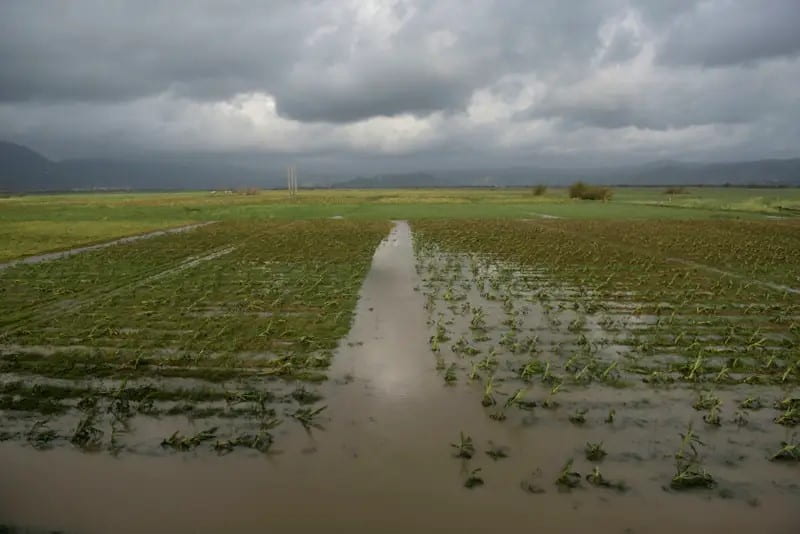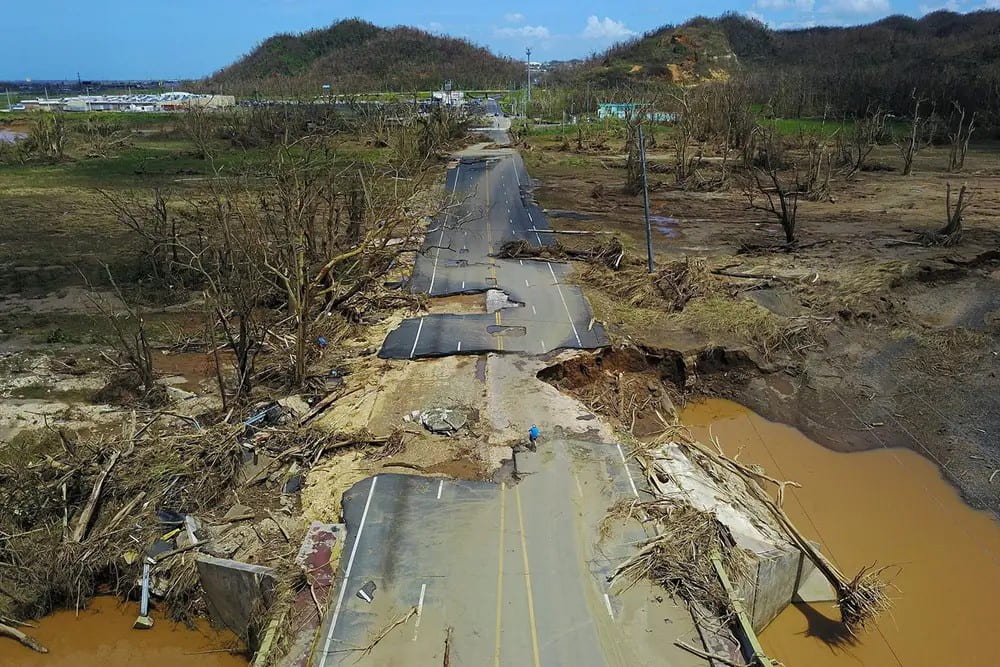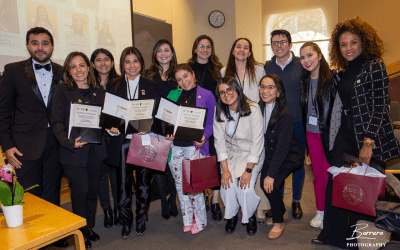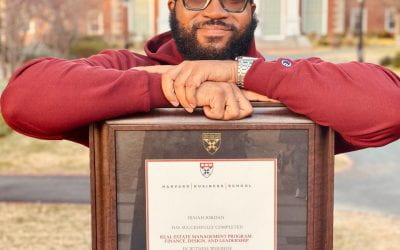
About the Author
Héctor Ortiz Domenech is a second-year MPA student at Harvard Kennedy School with a strong foundation in Economics, holding both bachelor’s and master’s degrees in the field. His passion lies in merging economic insights with public policy to craft interdisciplinary solutions for societal challenges. Driven by a commitment to serve the public and lifelong learning, he is excited to explore and contribute to the evolving landscape of economics, technology and sustainability.
Cultivating Resilience in Puerto Rico
Harvesting Fields of Change
As a born and raised Puerto Rican, my journey has always been intertwined with my homeland’s vibrant hues and resilient spirit. I have been lucky to be able to remain in my birthplace throughout its tumultuous economic recession and onslaught of natural disasters. Many friends and family members have had to leave elsewhere for a better quality of life and join the diaspora. In my case, as a current Harvard Kennedy School student, I have left the archipelago for the first time to attend graduate school. I am fortunate enough to be able to travel back home during the Winter and Spring Break and breathe in the tropical breeze. This experience back home, however, takes an unusual turn, weaving together the encounters of students from Harvard and the University of Puerto Rico, and my own, as we embarked on a journey to explore the agricultural heartbeat of Puerto Rico. Our trip was more than just an academic exercise; it was a deep dive into the contrasting worlds of commercial and mission-driven farming. It unraveled the complexities of sustainability, community, and cultural identity.
As we traversed the landscape of Puerto Rican agriculture, our group was greeted first by the commercial farm specializing in culantro herb cultivation known as the Carimbo Farm in the Cabo Rojo municipality. This farm was a marvel of modern agriculture, where efficiency and profitability were both goals and realities. The fields, a lush green carpet of culantro, stretched as far as the eye could see, symbolizing the farm’s commitment to monocropping. What struck me most was the systematic approach to farming here—every row of crops meticulously planned and every resource optimized for maximum yield. The farm’s success in sustaining long-term employment for five families was a testament to its business acumen, a rare story of stability in the turbulent world of agriculture.
In stark contrast, the mission-driven farm we visited next showed us a different picture. This farm was a mosaic of diverse crops, each with its special role in the ecosystem known as El Josco Bravo Farm in the Toa Alta municipality. Unlike Carimbo Farm, profitability was not the sole driving force here. El Josco Bravo’s ethos was rooted in community upliftment and environmental stewardship. It served as a living classroom, educating locals and visitors alike about sustainable agricultural practices and the importance of biodiversity. Here, the challenge was balancing the noble mission with the harsh realities of financial sustainability. This farm’s struggle to juggle its ideals with economic demands highlighted a critical question: how can mission-driven farms thrive financially without compromising their values?

El Josco Bravo Farm in Toa Alta, Puerto Rico. By Hector Ortiz Domenech

Carimbo Farm in Cabo Rojo, Puerto Rico. By Prof. Pedro Reina, UPR
Despite their differences, both farms faced a common set of challenges, reflective of the broader agricultural landscape in Puerto Rico. The most daunting of these was the minimal support from government bodies. With little to no aid, these farms were left to fend for themselves, making their successes even more remarkable. Another shared challenge was the constant threat of hurricanes, a grim reality that brings annual anxiety and potential devastation. Each farm had its own way of weathering these storms, both literally and figuratively, adjusting their business models and strategies to minimize losses and bounce back stronger.
Yet, amidst these challenges, there was a palpable sense of optimism and resilience. Both farms were pivotal in driving Puerto Rico’s agricultural economy forward. They were not just places of work but were integral to their communities, providing access to fresh, healthy, and local produce. Moreover, they both played a role in fostering a growing interest in eco-tourism and sustainable agriculture, crucial components in the island’s economic and environmental future. This dual focus on sustaining local communities and the environment was a powerful reminder of the multifaceted role agriculture plays in shaping the health and well-being of a society.

A field of plantains is flooded one day after the impact of Hurricane Maria in Yabucoa, Puerto Rico. By Carlos Giusti

After the passage of Hurricane María, a man rides his bicycle through a storm-damaged road in Toa Alta, Puerto Rico. By Ricardo Arduengo
Our journey through Puerto Rico was an intricate blend of learning and discovery, merging academic rigor with the rich tapestry of local culture. As a Puerto Rican, this expedition offered me a kaleidoscopic view of my homeland, seen through the diverse lenses of my peers from Harvard and the University of Puerto Rico. Each day, we delved into a new facet of Puerto Rican life, bridging the gap between academic theory and the vibrant reality of the island.
Each participant’s particular academic backgrounds and career aspirations added layers of depth to our discussions. Whether it was a debate on sustainable agricultural practices, a discourse on the socio-economic impact of local farming or reflections on Puerto Rico’s historical struggles and triumphs, every conversation was enriched by varied perspectives. This melting pot of ideas was intellectually stimulating and emotionally resonant as we all connected with the land and its stories in our special ways.
Our learning extended far beyond the confines of farms and lecture rooms. Each evening, after a day steeped in exploration, we immersed ourselves in the cultural heartbeat of Puerto Rico. These were moments of pure joy and celebration, in which the soul of Puerto Rico was expressed through its music and festivities. We attended local music concerts, where the rhythmic beats of “bomba” and “plena” told stories of resilience and joy. These musical experiences were not just entertainment; they were a living, breathing part of Puerto Rican heritage, offering us a deeper understanding of the island’s cultural landscape.
Our cultural explorations also included visits to local festivals and interactions with artisans and communities. These experiences allowed us to see the vibrant mosaic of Puerto Rican culture up close, from the intricately crafted art pieces to the spontaneous street dances that seemed to erupt from every corner. It was a vivid reminder of the island’s spirit—a spirit unbroken by challenges, always ready to embrace life with open arms.
The contrast between our daytime academic pursuits and our evening cultural escapades was striking. It underscored the multifaceted nature of our trip—one that was as much about understanding complex agricultural and economic concepts as it was about experiencing the festive and irrepressible spirit of Puerto Rico. This balance of learning and cultural immersion was a testament to the richness of Puerto Rican life, a life where academia and culture intertwine seamlessly, each enriching the other.

Dinner Activity at El Pretexto Bed & Breakfast in Cayey, Puerto Rico. By Prof. Pedro Reina, UPR
As I reflect on this journey, the lessons gained are manifold. The experience has deepened my understanding of sustainable agriculture and community involvement in my homeland, as well as underscored the importance of embracing diverse perspectives in any academic or cultural exploration. Puerto Rico, with its special challenges and unyielding spirit, continues to be a land of learning and inspiration.
More Student Views
Colombian Women Who Empower Dreams
English + Español
The verraquera of Colombian women knows no bounds. This was the message left with me by the March 30 symposium, “Empowering Dreams: 1st symposium in honor to Colombian women at Harvard.”
A Review of Born in Blood and Fire
The fourth edition of Born in Blood and Fire is a concise yet comprehensive account of the intriguing history of Latin America and will be followed this year by a fifth edition.
Resilience of the Human Spirit: Seizing Every Moment
In the heart of Chicago, where I grew up, amidst the towering shadows of adversity, the lingering shadows of generational demons and the aroma of temptation, the key to the gateway of resilience and determination was inherited. The streets of my childhood neighborhood became, for many, prisons of poverty, plundering, crime and poor opportunity.




